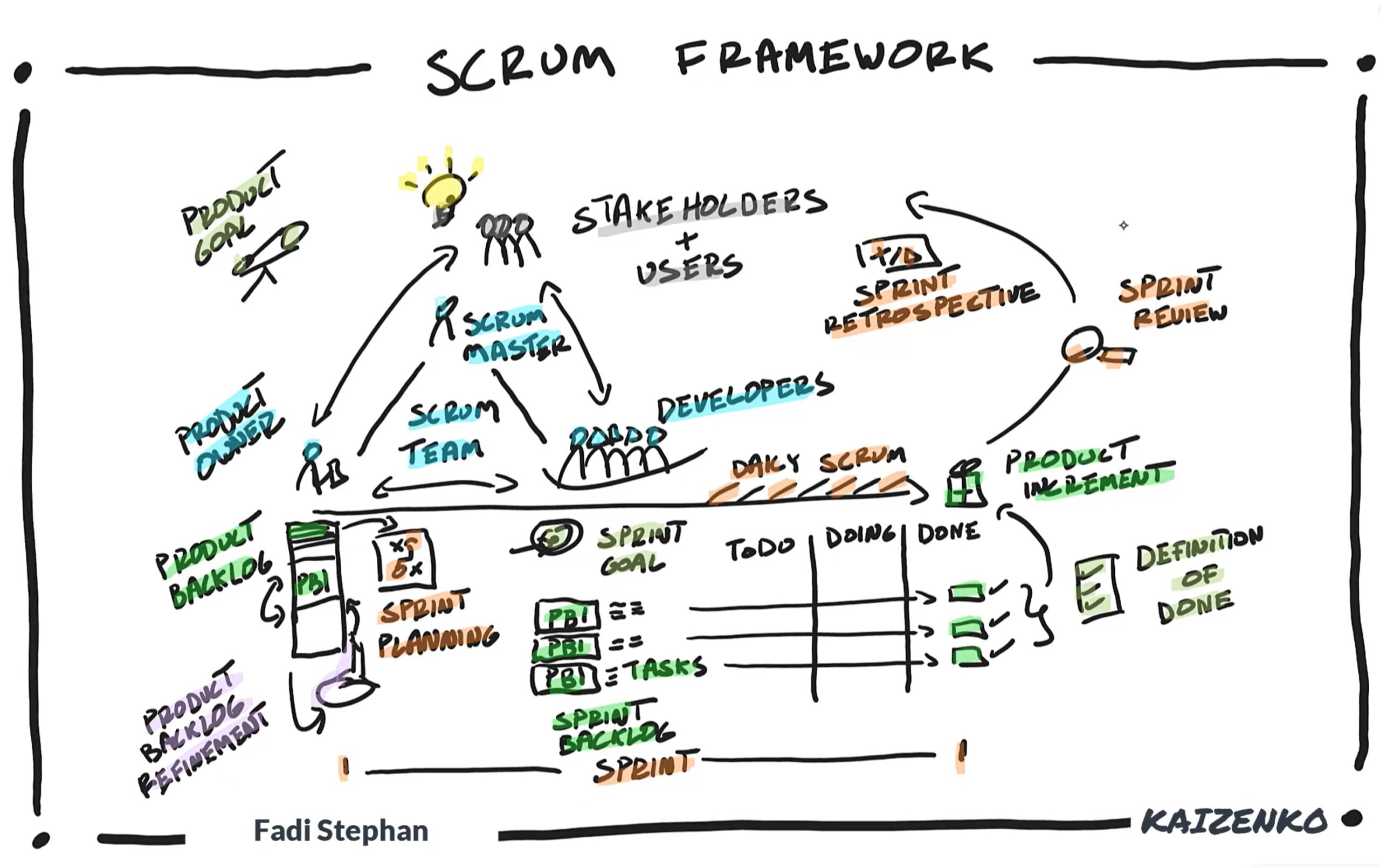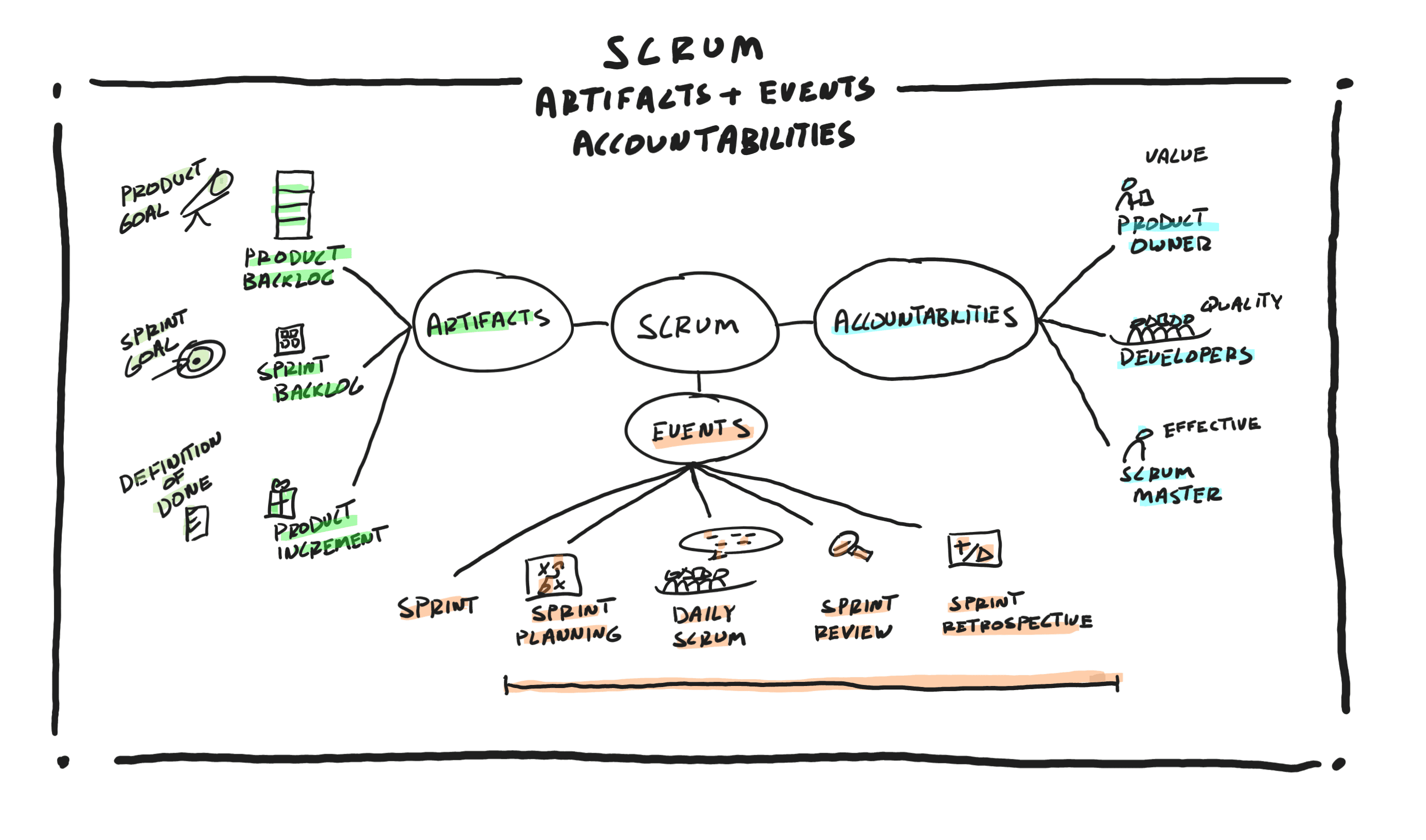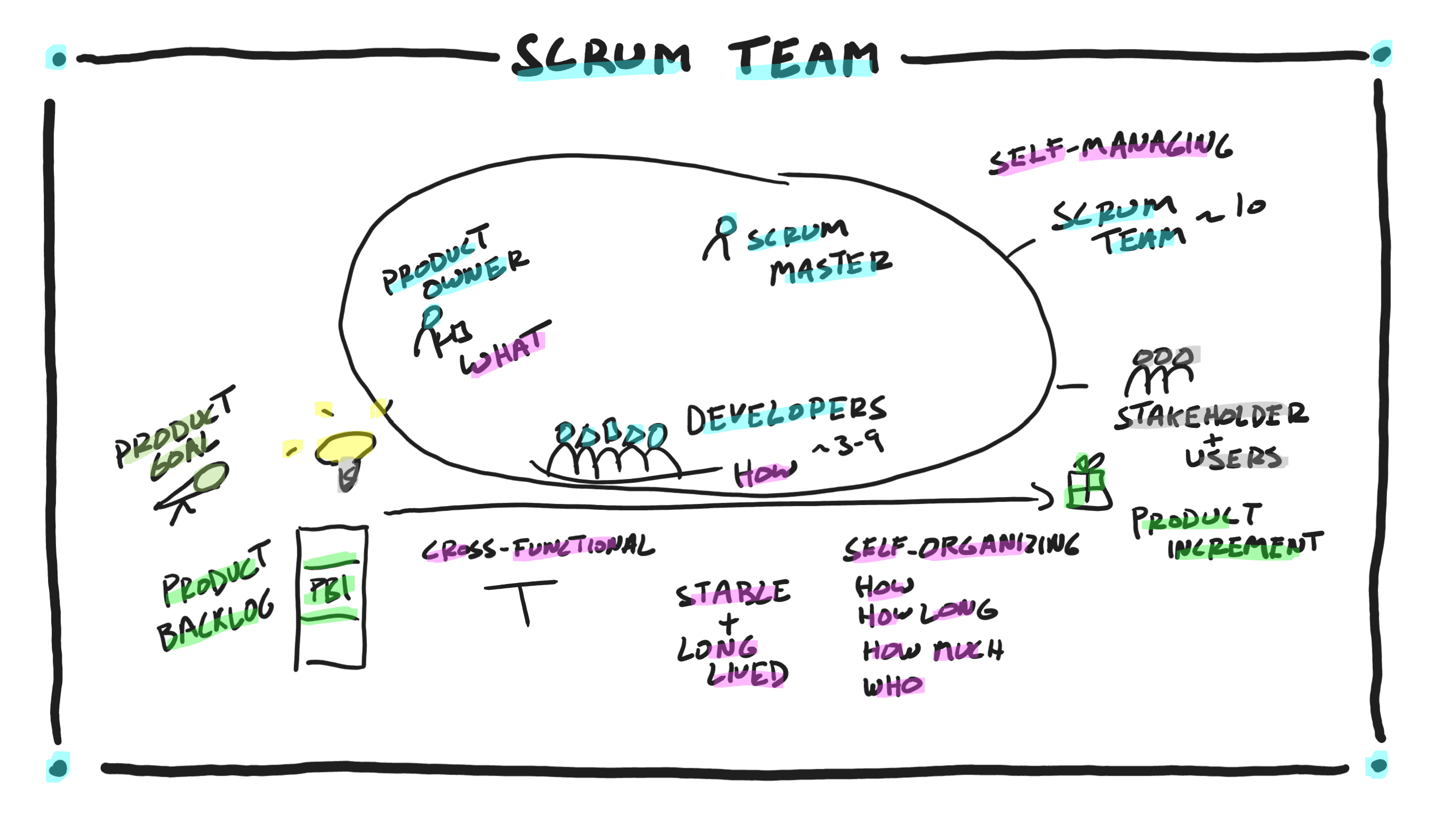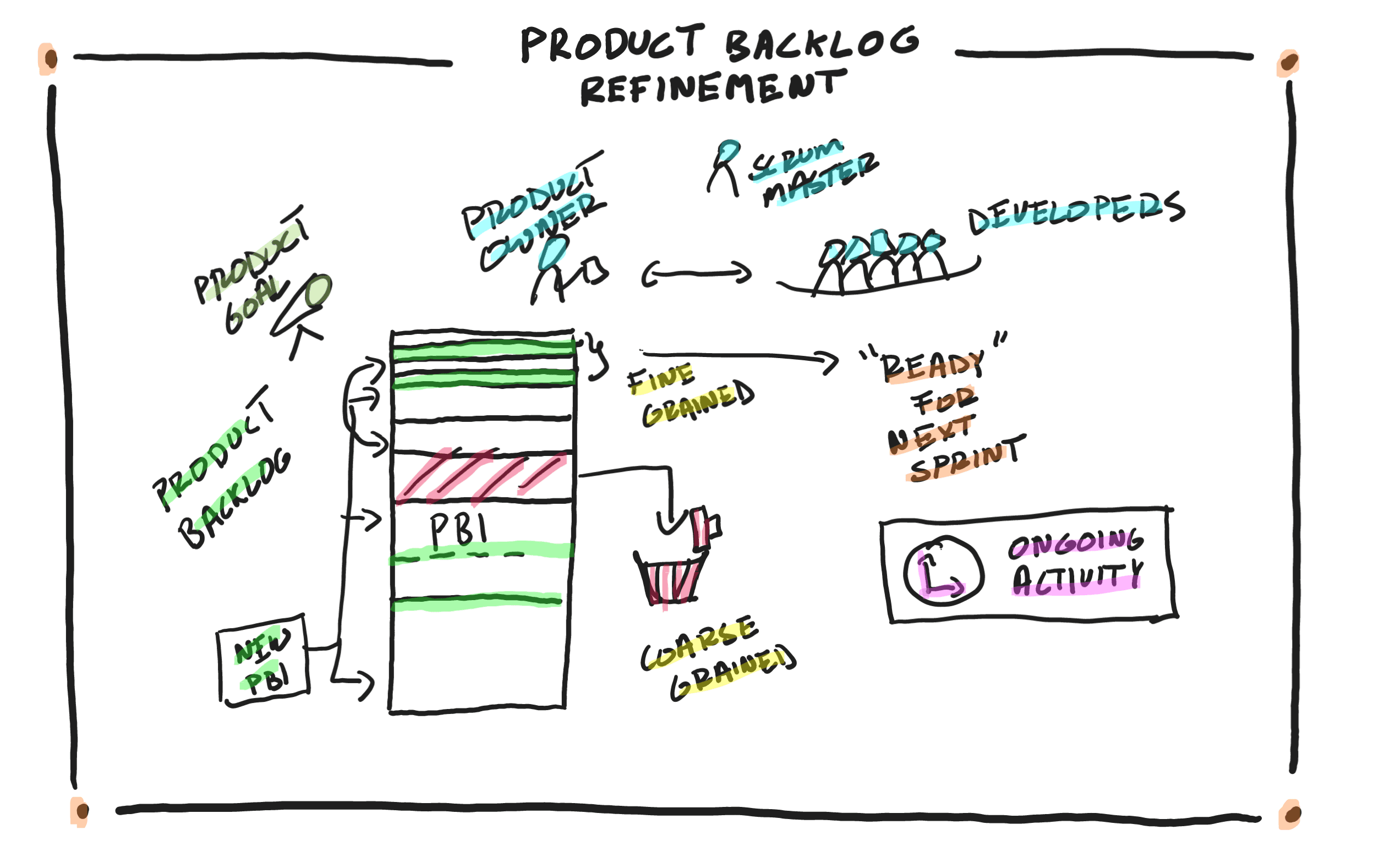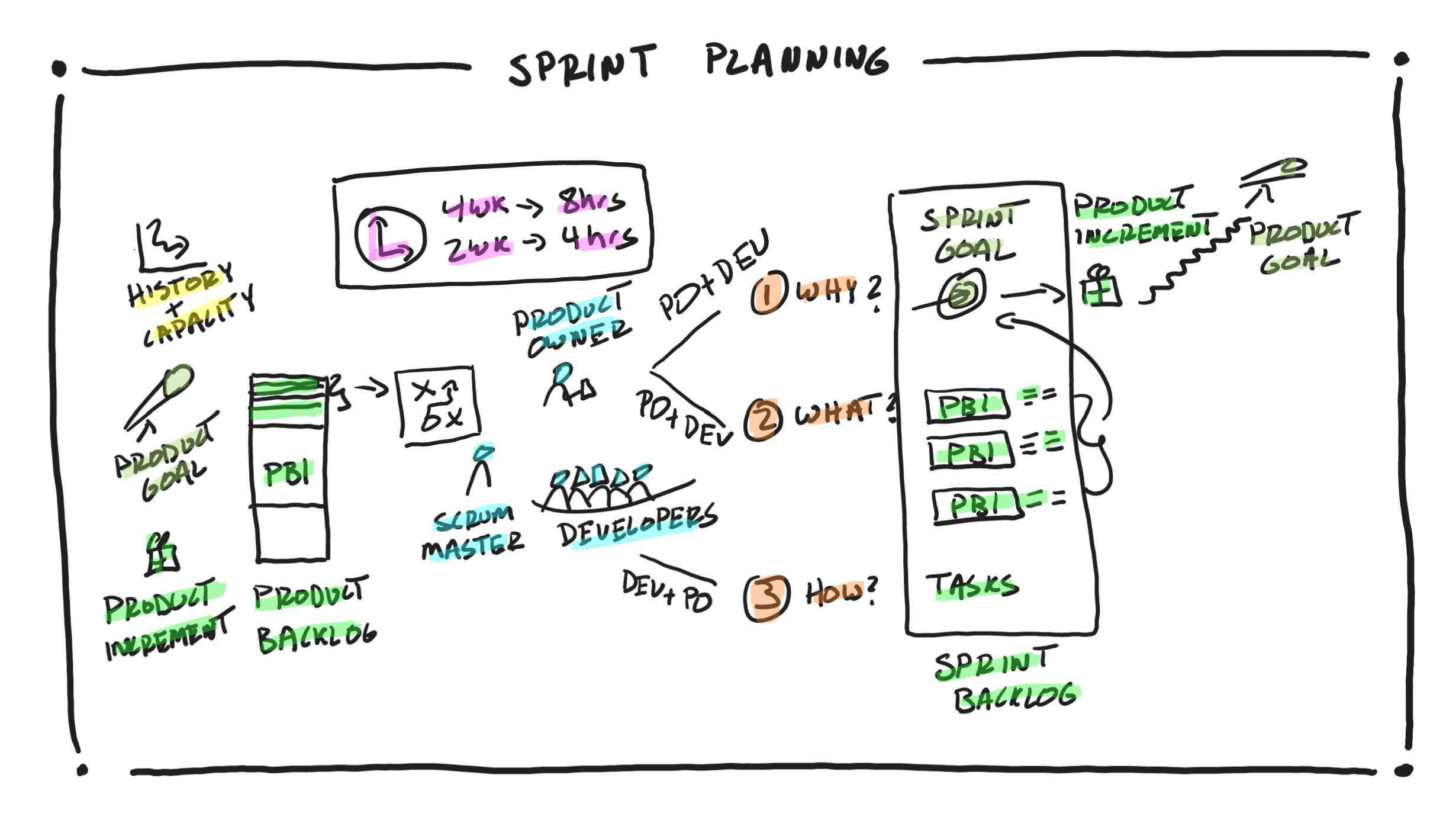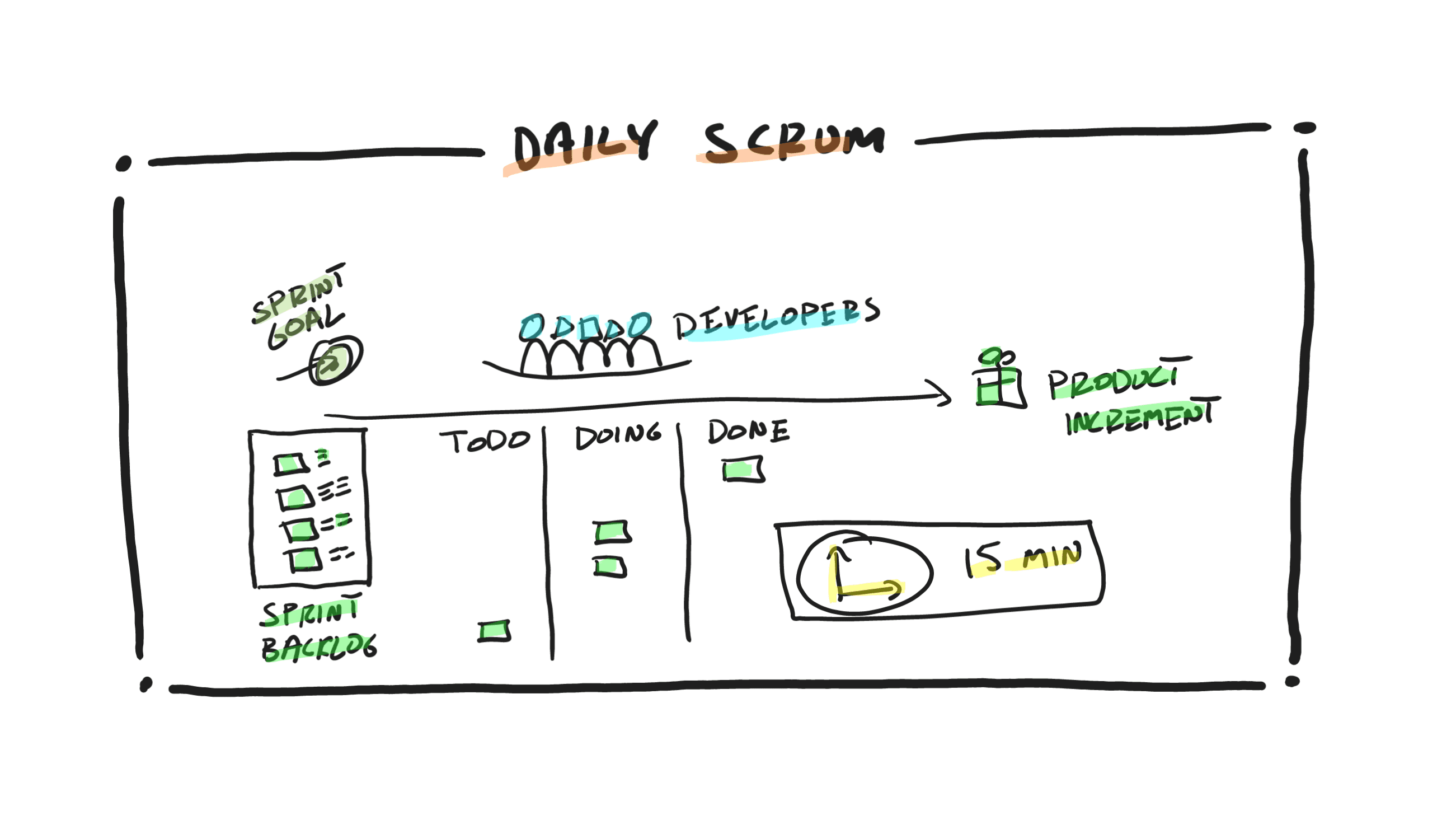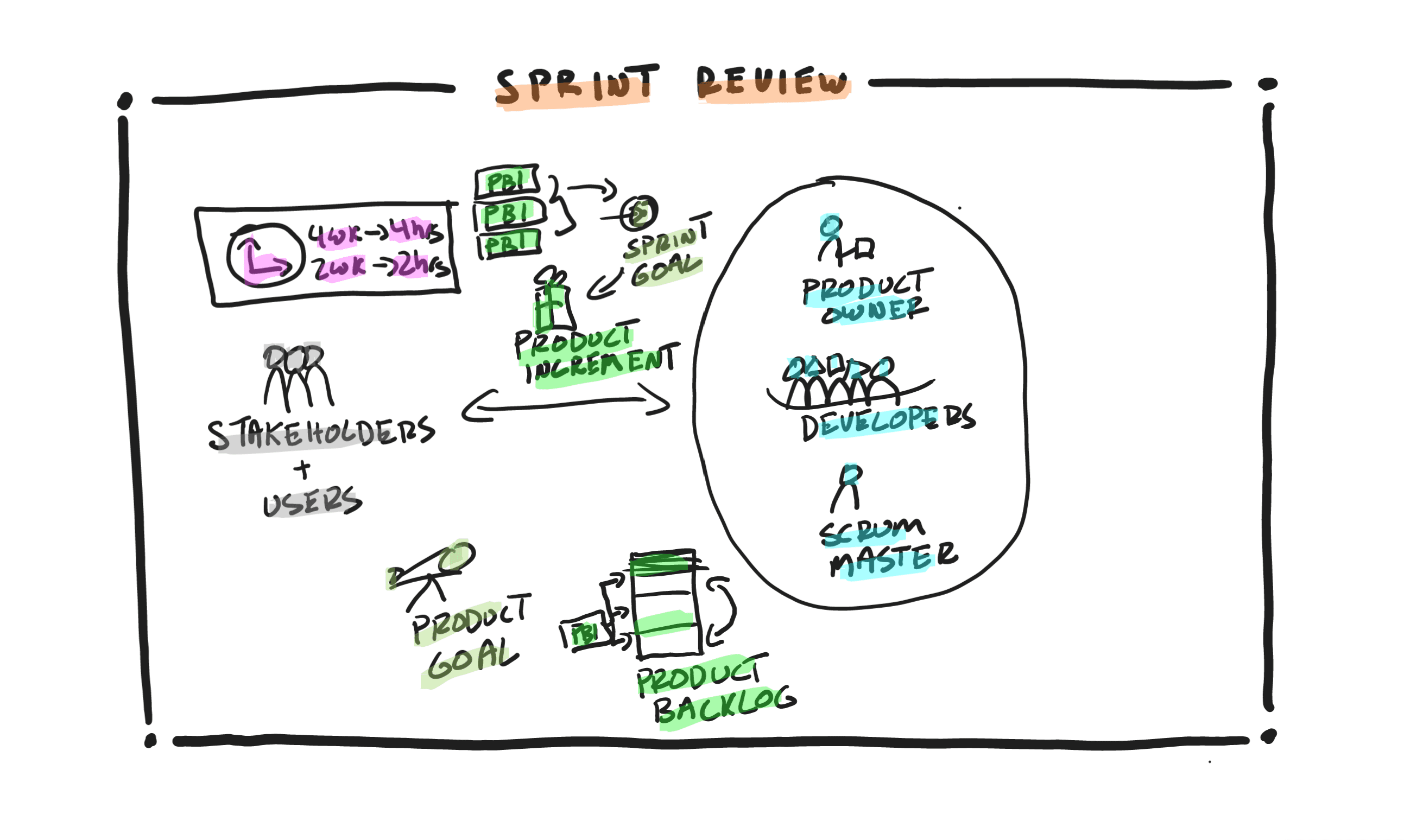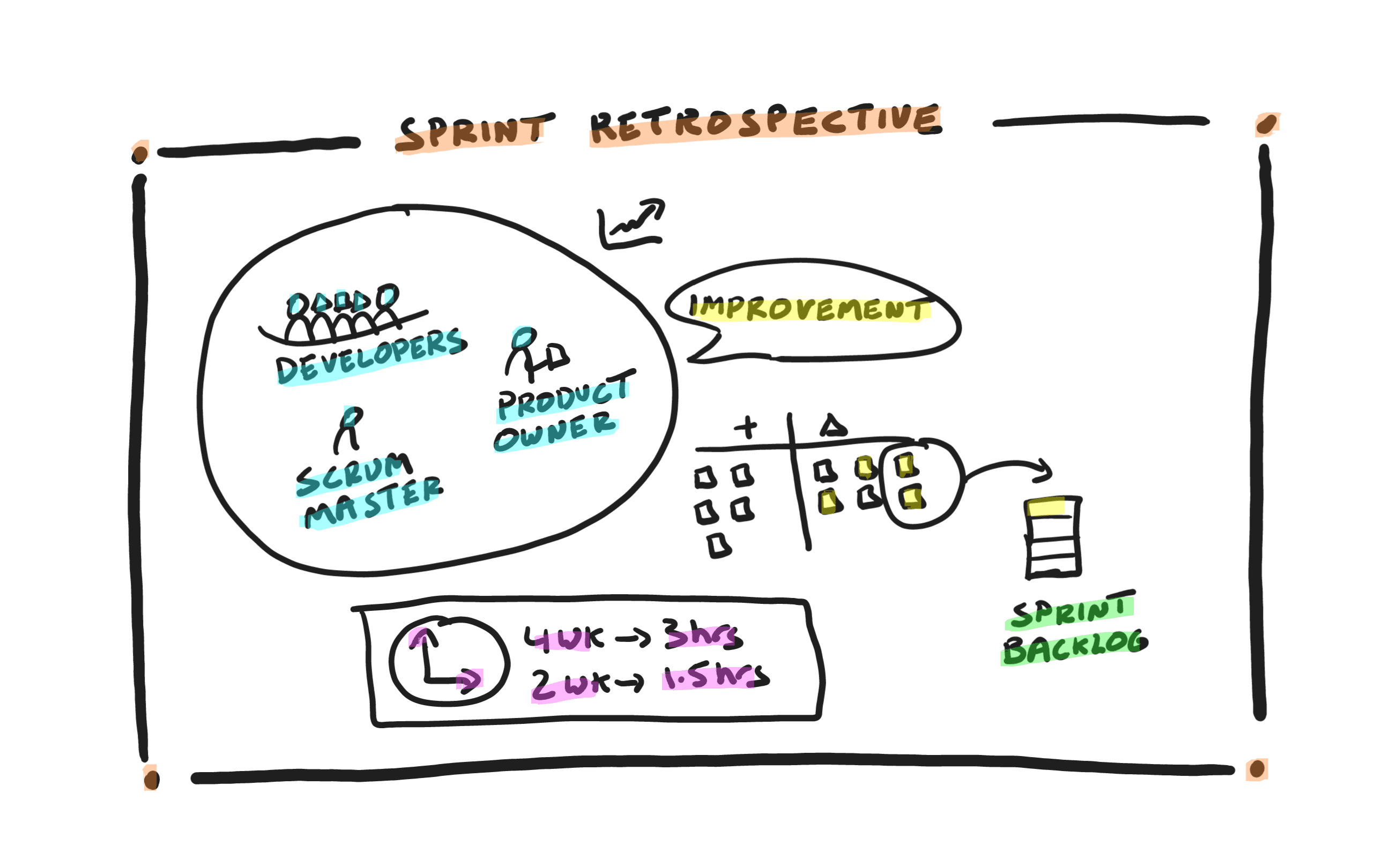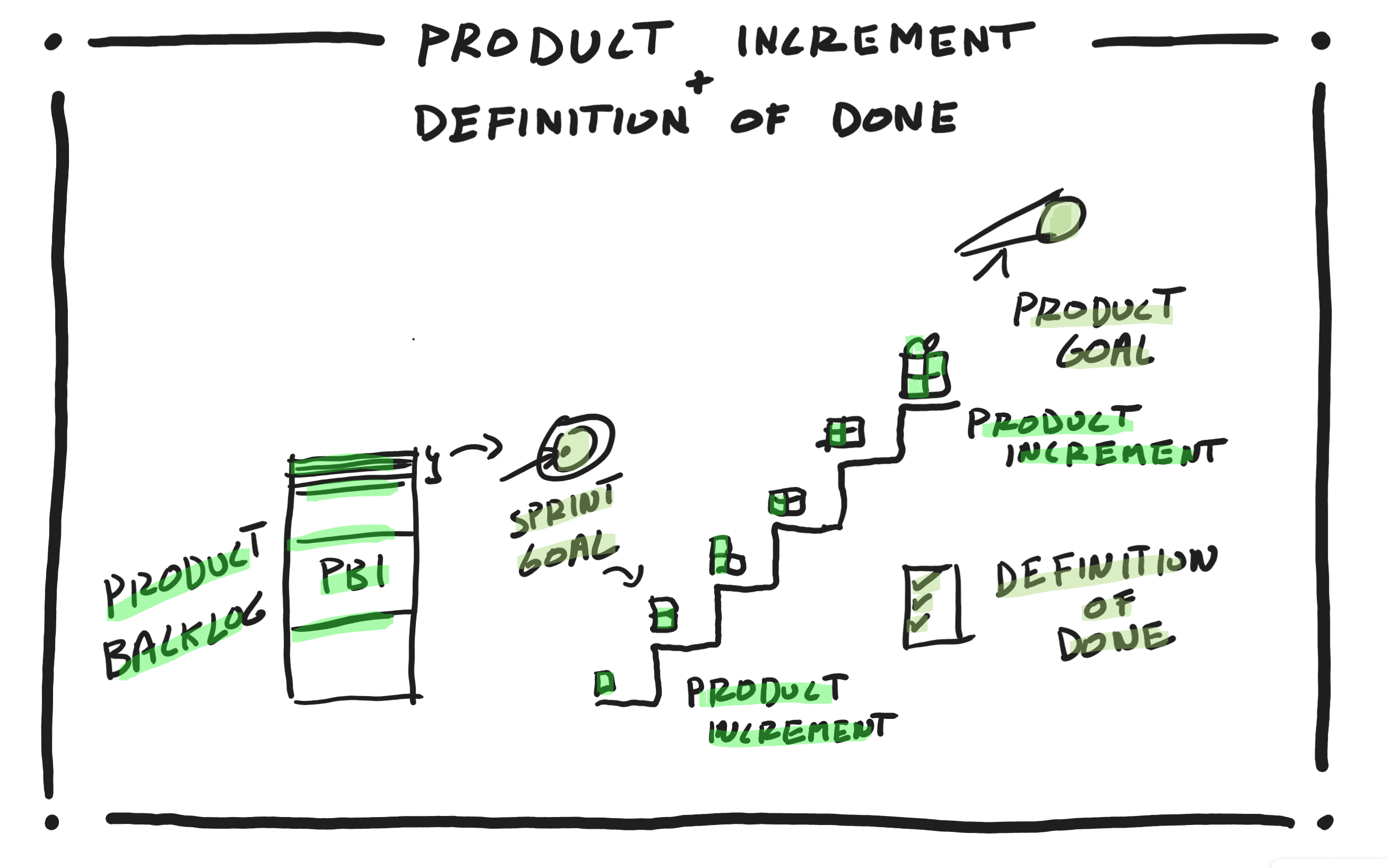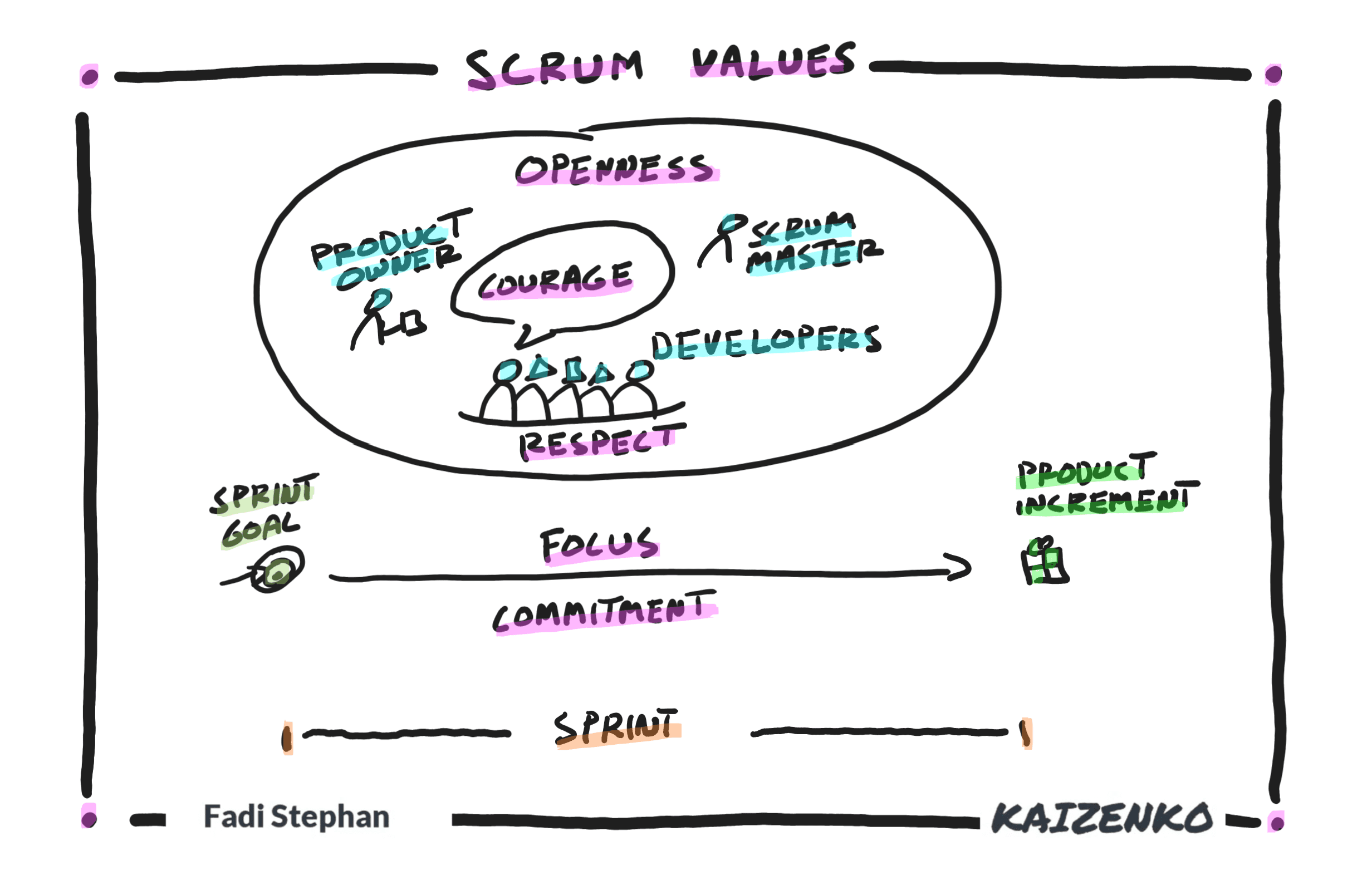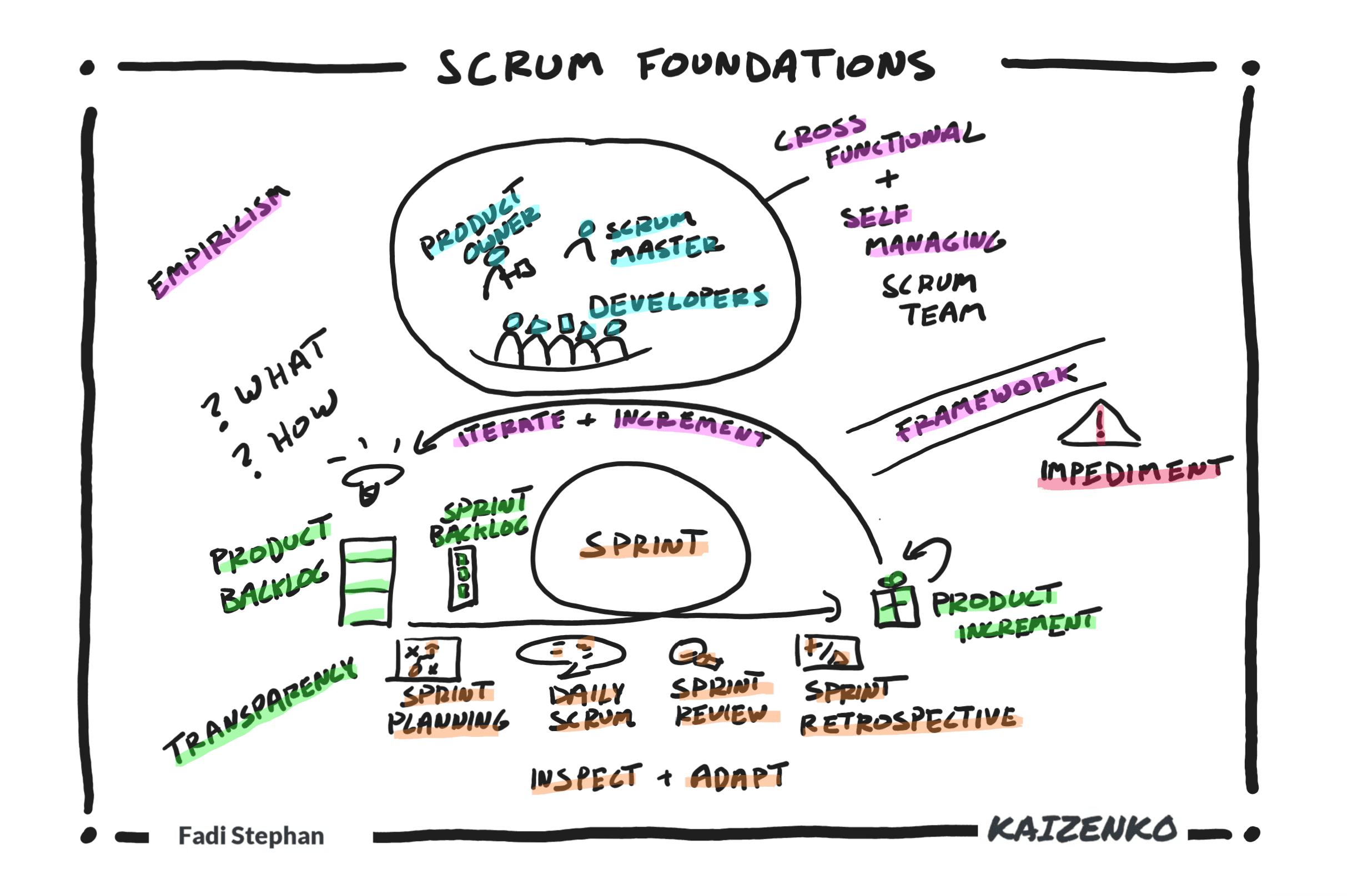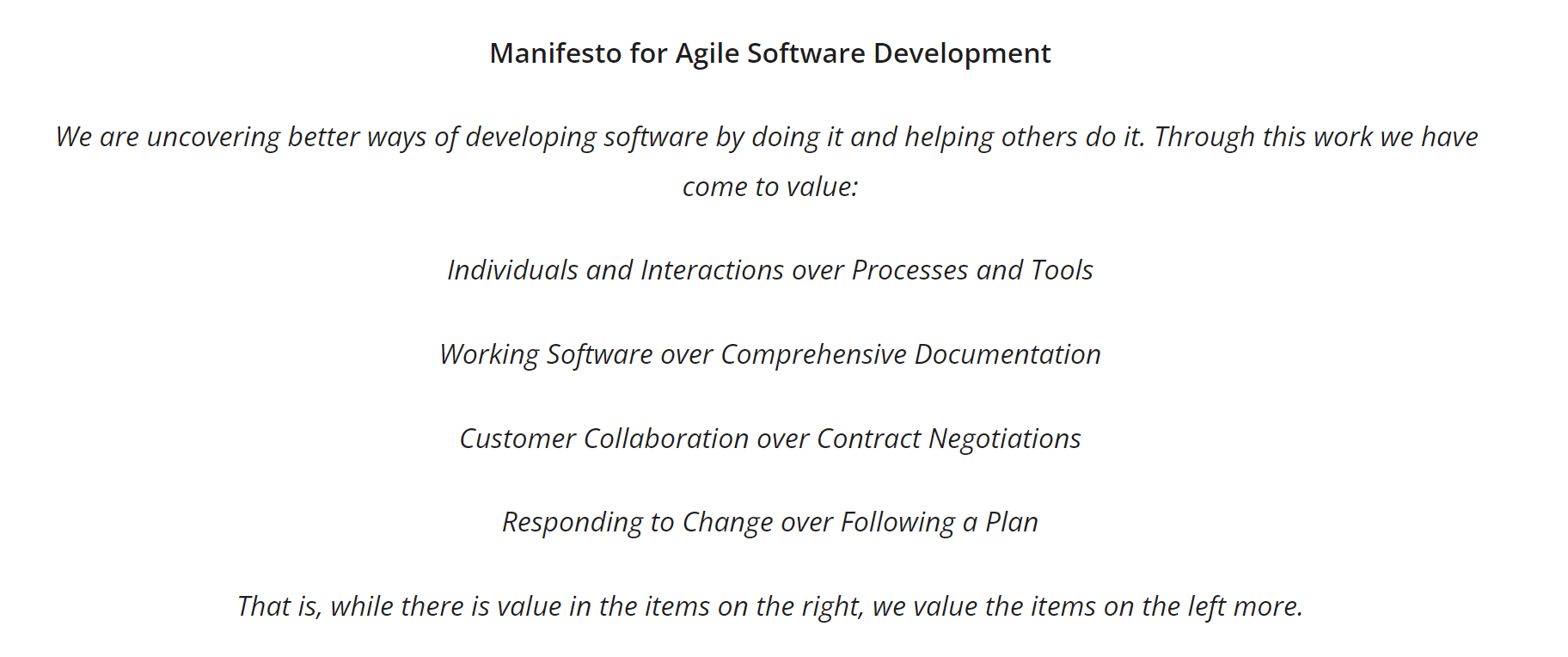Scrum is a framework for developing, delivering, and sustaining complex products. It all starts out with our stakeholders, customers, and users that have an idea about a product they need and want developed. They collaborate directly with Developers to turn this idea into reality.
Developers in Scrum are not just programmers. They are part of a self-managing and cross-functional team with all of the necessary skills to take a concept or idea and convert it into a Product. In order to ensure that all the stakeholders are on the same page and are not pulling the Developers in different directions, the Product Owner engages with the stakeholders and Developers to establish a Product Goal and get everyone aligned on the overall vision and roadmap. From this Product Goal, a Product Backlog emerges consisting of Product Backlog Items like hypotheses, features, requirements, and enhancements that help achieve the product goal. Now that we have a Product Backlog, Developers can work by pulling items off of the top of the Product Backlog and build the product iteratively and incrementally. For each Product Increment delivered, the stakeholders and users provide feedback, and based on this feedback, the Product Owner re-orders and updates the Product Backlog ensuring that the most valuable items are towards the top.
How does all this happen? Well, In Scrum, we work in Sprints. A Sprint is a fixed duration with a specific start time and end time. A Sprint cannot be longer than 30 days. Once a team decided on a Sprint length, all Sprints follow the same length so that the team works on a regular cadence. Most teams I work with today do 2-week Sprints.
The Sprint starts with Sprint Planning where the team plans out their work for this Sprint. In Sprint planning, they establish a Sprint Goal, pull the high-priority items from the top of the Product Backlog that will help accomplish the Sprint Goal, and then task out the activities that they have to do in order to build and develop these Product Backlog Items into a working Product Increment. The Sprint Goal, the Product Backlog Items, and the tasks are known as the Sprint Backlog, or the team’s plan to accomplish the work.
From this point on, the team is focused on the Sprint Backlog and collaborates together to complete these items as effectively as possible. Every day the Developers plan their day in what is called a Daily Scrum where they inspect their progress toward the Sprint Goal and adjust the Sprint Backlog accordingly.
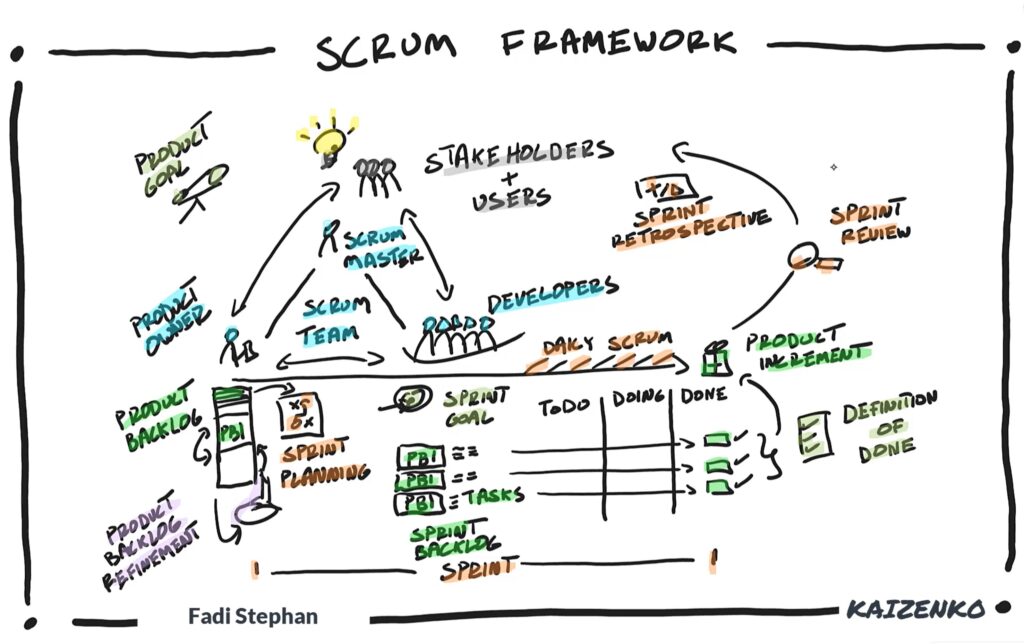
This continues until the end of the Sprint where the Developers package up what they completed into a Product Increment. The Product Increment is the output of every Sprint. It is a quality, working, useful, and valuable increment that includes all the previously built increments in addition to what was just built in this Sprint. The Product Increment should be at a level of quality as per the team’s agreed-upon Definition of Done.
At the end of each Sprint, the team has a Sprint Review where they collaborate with the Stakeholders and users to get feedback on what they built and what to build next. “Here’s what you asked us to build, and here is what we built. Is this correct? Is this what you were expecting? Is this valuable? Are we on the right track? Here’s what we are about to work on next? Is this still the most valuable thing we can be working on? Based on the feedback, the Product Owner adjusts the Product Backlog accordingly. This ensures that for each Sprint, the team is always working on the most valuable items and are regularly delivering value to the stakeholder in an iterative and incremental fashion.
Next, the team has a Sprint Retrospective to inspect how they are working as a team and see if they can improve. The Sprint Review is about inspecting and adapting the Product, while the Sprint Retrospective is about inspecting and adapting the process of building the Product. Any action items that come out of the Sprint Retrospective get added to the next Sprint Backlog as tasks for the team to work on.
Throughout the Sprint, the team is actively doing Product Backlog Refinement where they refine, clarify, research, estimate, split, and prep the Product Backlog Items so that the items at the top of the Product Backlog are ready to be worked on. There are no breaks in between Sprints. When one Sprint ends, the next one starts, so the product backlog needs to always be prepped with actionable items for future Sprints.
Finally, we have our Scrum Master, who is the team’s leader providing servant Leader to support the Developers, the Product Owner, and the organization as a whole, ensuring that everyone is working together effectively and making forward progress toward their goals. The Developers, the Product Owner, and the Scrum Master are known as the Scrum team.
This is the Scrum Framework as defined by it’s
5 events: The Sprint, and within the Sprint, Sprint Planning, Daily Scrum, Sprint Review and Sprint Retrospective
It’s 3 Artifacts: The Product Backlog, Sprint Backlog, and Product Increment along with the 3 commitments of the Product Goal, Sprint Goal, and Definition of Done.
And finally, it’s 3 accountabilities of Product Owner, Developers, and Scrum Master.
For more details, sign up for an upcoming foundational ScrumMaster® (CSM®) class or a Certified Product Owner® (CSPO®) class or Certified Scrum Developer® (CSD®) class.
Next check out the entire Scrum in a Nutshell series:
Scrum in a Nutshell
Scrum is a framework for developing, delivering, and sustaining complex products. It all starts out with our stakeholders, customers, and users that have an idea about a product they need and want developed. They collaborate directly with Developers to turn this idea into reality. Developers in Scrum are not just programmers. They are part of…
Scrum Accountabilities, Artifacts, and Events in a Nutshell
In Scrum, there are 3 accountabilities, 3 artifacts, and 5 events. The 3 accountabilities in Scrum are: The 3 artifacts in Scrum are: The 5 events in Scrum are: And that’s the Scrum Framework as defined by
Scrum Team in a Nutshell
The Scrum team consists of 3 accountabilities, Developers, Product Owner, and Scrum Master. Developers are accountable for building and delivering a quality working Product Increment at the end of each Sprint. They are a small group, typically 3 to 9 members that are cross-functional and self-organizing. Developers are cross-functional to remove bottlenecks and dependencies. Developers…
Product Backlog Refinement in a Nutshell
The Product Backlog is an ordered list of hypotheses, requirements, features, enhancements, or Product Backlog Items that help the team accomplish the Product Goal. The Product Backlog is the team’s single source of work. Meaning, anything the Developers are working on should be coming from the Product Backlog. There are no side requests. Any work…
Sprint Planning in a Nutshell
In Scrum, the Sprint starts with Sprint Planning where the Scrum team plans out their work for the Sprint and creates a Sprint Backlog. The Sprint Backlog is the team’s plan to accomplish the work. Sprint planning is timeboxed to 2 hours per week of Sprint, so for a 2-week Sprint it is one event…
Daily Scrum in a Nutshell
The Daily Scrum is a brief daily planning event by the Developers to inspect their work and the progress they are making toward the Sprint Goal that will result in a Product Increment. The Developers created their Sprint plan or Sprint Backlog in Sprint Planning at the beginning of the Sprint. However, this plan is…
Sprint Review in a Nutshell
The Sprint Review is a working session for the stakeholders, users, and customers to collaborate with the Scrum team which includes the Developers, Product Owner, and Scrum Master, and inspect the progress made toward the Product Goal based on the latest Product Increment. The Sprint Review is about getting feedback from the stakeholders and users…
Sprint Retrospective in a Nutshell
The Sprint Retrospective is a reflection event that occurs at the end of each Sprint. It is for the entire Scrum team which includes the Product Owner, Developers, and ScrumMaster to inspect how they are operating and then come up with a continuous improvement plan to adapt and become more effective as a team and…
Product Increment and the Definition of Done in a Nutshell
The Product Increment is the output of every Sprint and is an increment that brings the team one step closer to the overall Product Goal. This means that each Sprint is focused on a cohesive set of Product Backlog Items that meet a Sprint Goal and not random unrelated items. Once a Sprint starts and…
Scrum Values in a Nutshell
For teams to succeed with Scrum, team members must become proficient in living the 5 Scrum values of commitment, focus, openness, respect, and courage. Commitment: In Scrum, the team commits to each other, not to other people, but to each other, on supporting each other to deliver on the Sprint Goal and Product Goal. Focus:…
Scrum Foundations and Theory in a Nutshell
Scrum is a framework for solving complex adaptive problems with high levels of unknowns, uncertainties, or risks around what to build or how to build it. Scrum involves a cross-functional and self-managing Scrum team that uses empiricism to build products iteratively and incrementally to reduce risk and deliver early and often. The Scrum team uses…
Scrum and the Manifesto for Agile Software Development
Back in February 2001, at the lodge in Snowbird Utah, 17 thought leaders from the software industry got together to discuss the state of software development and compare various lightweight frameworks that popped up in the late 90s because of dissatisfaction with the traditional waterfall approach to building products. The participants shared and learned about…
